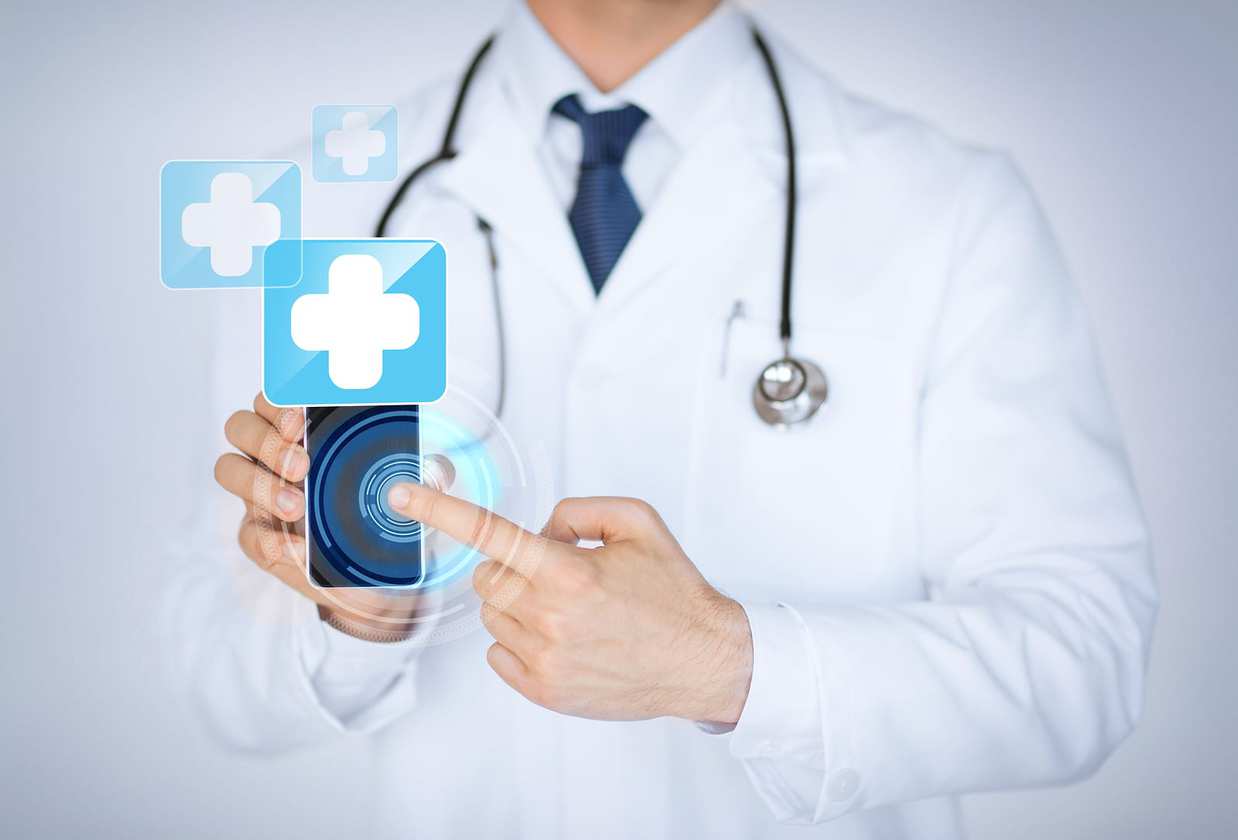If you’re interested in taking part in one of the better healthcare online degree programs, you need to be ready to work with QR codes.
Why? QR codes are just one of many methods that health technicians are looking at using to increase the quality of our healthcare in the future. They are quickly being integrated into health information technology that accesses our records and will allow us to do more with our smartphones. Through the use of QR codes and new applications in health technology, patients will be able to administer and track healthcare in preparation for the next doctor’s visit.
Here are ten ways that QR codes will, and in some cases already do, make us healthier (and why they will be relevant to your studies in the healthcare field).
Medical Records
The world of health information technology is rapidly changing. Technicians in today’s online degree programs are beginning to study the impact of technology in medical billing, but QR codes will that take access to a new level. For example, if you plan on taking part in the healthcare or IT programs at online schools like Bryant & Stratton (visit online here) you may learn about some of the ways that QR codes are being studied and implemented already.
For example, soon, hospitals will begin utilizing health records in the cloud and QR codes will enable technicians to go online and retrieve records for billing or insurance purposes with mobile devices. This technology is already in use on ID cards, where employee data is stored and accessed via scanners.
In addition, patients will have access to mobile-optimized billing through QR codes on their paper invoices.
Prescription Information
Codes on prescription drug labels will help connect patients with up-to-date information about the drugs they are taking. This information is already maintained by your local pharmacy and, in some cases, by the drug maker. Patients are able to learn more about side effects, and could see data on testing and announcements from the company.
Regulate a Patient’s Medication
QR codes are links to something else, and if that something else is an application then students can learn how the implementation of these codes can actually help regulate a patient’s medication schedule. QR codes on handouts can link to an application online, or a calendar set up for the patient. The end result is a scannable reminder of meds taken over the medicating period.
QR Codes on Patient Devices
Devices used by patients can contain QR codes that link to more instruction. A QR code in the instruction manual can link to a YouTube video showing how to set the device up, or codes can link the patient to customer support sites. These codes tend to provide assistance in using the equipment assigned to the patient.
QR Codes on Exercise Equipment
QR codes on in and outdoor exercising equipment will show users how to use the device, and provide pointers on stretching beforehand. This is already a feature in some parks, where QR codes mark trails and help provide navigation to people hiking. In the gym, instructional videos will educate users on how to use equipment safely and scale up routines to match their strength.
Maps to a Hospital
Patients looking to navigate to hospitals in a new area will be able to utilize QR codes that lead them to the address. Mobile sites may also offer information about the emergency room, like wait times and hospital layout. Visitors may scan maps to find a patient’s room after signing in with security. These codes will help patients find their way in places that are new or unrecognizable.
Reward Points
Speaking of QR codes on exercise equipment, students focusing on billing and insurance matters will learn how scanning codes may earn reward points from the patient’s insurance company. These codes track the value of the foods you eat and exercises you do. The idea is to encourage patients to eat healthier.
Tattoos
Temporary tattoos on patients already provide health professionals (like yourself when you finish your schooling) with access to health records online. These tattoos are designed to withstand repeated washings, but will fade over time as the concerns become less alarming. This procedure is done to save patients from wearing a medically identifying bracelet.
Food
QR codes are increasingly becoming a part of the foods we eat. We can already scan codes at local restaurants to learn more about their menus, and see the healthier options up close. Codes will also provide useful nutritional comparisons for parents with growing children. Handouts may also contain QR codes linking patients to meal plans specifically designed for their care.
Advertising
Advertising will see the most innovation with the usage of QR codes. These codes already link patients to information-rich websites where they can learn more about the medications they are taking. Prescription drugs will find new ways to link patients to their information, using multiple medias to get the word out. Clinics will use the codes to help connect patients with professionals and arrange appointments from a mobile device.
QR codes and augmented reality are definitely set to make an impact in health care. As a student, you need to learn how to use them. Their use in this field may seem unlikely, but the technology is already in use by hospitals across the country.
